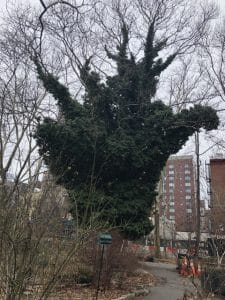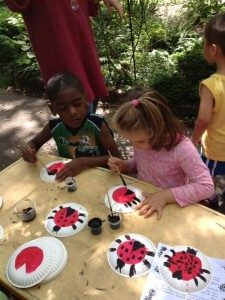Student Walk-Out March 24th Demand Action on Gun Control
Emma Gonzalez, David Hogg,Cameron Kasky, Alex Wind and Jaclyn Corin teenagers who survived the school shooting massacre in Florida last week:
From ABC News Martha Raddatz:
“They are determined to use protests and political action to make the mass shooting …in Parkland, Florida, a turning point in the national debate over gun control.
Cameron Kasky, an 11th-grader:
“People keep asking us, ‘What about the Stoneman Douglas shooting is going to be different, because this has happened before and change hasn’t come? This is it.”
“People are saying that it’s not time to talk about gun control. And we can respect that.
Here’s a time. March 24th in every single city. We are going to be marching together as students begging for our lives.”
Called “March for Our Lives,” the demonstration should transcend politics, according to Kasky and four of his classmates:
Kasky:
“This isn’t about the GOP. This isn’t about the Democrats. This is about the adults…at this point, you’re either with us or against us.”
“Any politician on either side who is taking money from the NRA is responsible for events like this. At the end of the day, the NRA is fostering and promoting this gun culture.”
…the point is to “create a new normal where there’s a badge of shame on any politician who’s accepting money from the NRA.”
Gonzalez:
“the student activists from Parkland want to have conversations about guns with President Trump, Sen. Marco Rubio and Gov. Rick Scott”
“We want to give them the opportunity to be on the right side of this”
“The kids who need to take part in this are kids, everyday kids just like us. They are students who need to understand that this can very quickly happen to them … They need to join us, and they need to help us get our message across. All students should realize that a school shooting could happen anywhere.”
Update: Neighbors to Save Rivington House: letters to China Vanke, Mayor, Statement on AG Settlement, etc.
Neighbors to Save Rivington House appreciates the support of the community, the Community Board, all of our local elected officials, the Comptroller’s Office, the Dept. of Investigations, the NY State Attorney General’s Office, the US Attorney Generals Office for the Southern District of NY, neighbors, not-for-profits, CBO’s, Mobilization for Justice and others in this 3 1/2 year fight to return the building and to get restitution for those who were treated as expendable. was meant to be, in perpetuity, a resource on behalf of the NYC public as a health facility.
To stay updated please check our Facebook page. More to come.
Our letter to China Vanke [buyer of Rivington House and the richest real estate company in the world] of August 4, 2016. English and Chinese versions:
Request for Mayor to Call Promised Meeting with Buyers of Rivington House: Slate Property Group, Adam America, China Vanke.
Statement on the Attorney General’s Settlement with Allure:
Statement in Response to Recent Permits Filed by Slate Property Group, Adam America, China Vanke:
Book: Creating an Ecological Society: Toward a Revolutionary Transformation
In November 2017, UN climate observers reported that the past three years have all been in the top three years in terms of temperature records. They also reported temperatures topping 50C in Asia, record-breaking hurricanes in rapid succession in the Caribbean and Atlantic, devastating monsoon flooding affecting millions, and a relentless drought in East Africa. The World Meteorological Organisation has stated that indicators up to this point suggest that 2017 will actually be the hottest year since records began. The concentration of CO2 in the atmosphere is now estimated to be higher than at any time in at least 800,000 years. Bearing in mind our species has been on the planet for only about a quarter of that time, this is clearly a crisis of unprecedented magnitude for humanity.
Although the existential threat to life on Earth by climate change becomes increasingly apparent year by year, the capacity of capitalist politicians to respond appropriately remains pitifully inadequate. Trump’s stated goal to take the US out of the 2015 Paris climate deal is only the most egregious example. Supporters of renewable energy estimated earlier this year that UK government funding of wind, solar, biomass power and waste-to-energy projects is set to fall by 95% over the next three years.
Creating an Ecological Society: Toward a Revolutionary Transformation
By Fred Magdoff and Chris Williams
Monthly Review Press, 387 pages
Hardcover: $95.00; Paperback: $25.00; E-book: $21.25
Help the Lost Ladybug Rescue Team Win $ for the 9-Spotted Ladybug
Lost Ladybug Rescue works with Cornell University to bring these 9-spotted ladybugs to communities all over – they’ve come to our own M’Finda Kalunga Community Garden.
Please help them win this grant and get more attention for their efforts. It’s free and it’s easy!
Just click and vote for
Lost Ladybug Rescue
Help the Lost Ladybug Rescue in 2018 by Helping them win $15,000 in the American Small Business Championship
Voting is quick! Voting runs until 5pm February 14th.
(apparently you can vote more than once, even up to once each hour. It will help them catch the attention of the judges.
THANK YOU!
Help the Lost Ladybug Rescue in 2018 by Helping them win $15,000 in the American Small Business Championship
Voting is quick! Voting runs until 5pm February 14th.
(apparently you can vote more than once, even up to once each hour. It will help them catch the attention of the judges.
THANK YOU!
Lost Ladybug Rescue aims to bring an endangered native lady beetle species back from the brink of extinction through breeding and selling of ladybug larvae and educational rearing kits.
What makes your business one of the best small businesses in your community?
Lost Ladybug Rescue gives gardeners, environmentalists and educators a unique opportunity to help save an endangered native ladybug. The nine spotted ladybug once played a valuable role in balancing agricultural and natural ecosystems across North America but has recently become extremely rare. This is also the New York State insect! While organic gardeners release our nine- spotted ladybugs to help control pests, they are boosting the population of this now endangered native at the same time. When student groups care for their true-to-life rearing kits, they are learning about insect life cycles, ecology and conservation. When they release their adult ladybugs, they are also helping to reintroduce this rare native. For years, over 7000 citizen scientists have supported the research of the Lost Ladybug Project. Now this community can join the mission of trying to save the nine-spotted ladybug. Our greatest business success has been generating enthusiasm in our customer base.
2018 The Year of the Bird
Along with it being the Year of the Dog…!
Stay tuned for local events/updates
National Geographic’s The Year of the Bird
“In 2018, we mark the centennial of the Migratory Bird Treaty Act, the most powerful and important bird-protection law ever passed. In honor of this milestone, nature lovers around the world are joining forces to celebrate the “Year of the Bird” and commit to protecting birds today and for the next hundred years.”
February is The Great Backyard (Park/Community Garden) Bird Count. Look for birds in many places. Here’s more.
“IF YOU TAKE CARE OF BIRDS, YOU TAKE CARE OF MOST OF THE ENVIRONMENTAL PROBLEMS IN THE WORLD”
With thanks to:
Presentation by MTA & NYC Dept of Transportation on the L Train Shutdown Impacts
CB 3 Transportation Committee meeting regarding coming (April 2019) L Train shutdown
Tuesday, February 13, 2018 at 6:30 PM
Grace Church School. 46 Cooper Square (at 6th street/Bowery)
MTA and DOT will present the latest plans and answer your questions.
The Transportation Committee will vote on a resolution to send your concerns to the MTA and DOT and ask for plans to address these concerns.
CB3 needs your help identify possible impacts and problems that need to be addressed.
Questions/Concerns on impacts on the SDR Park community
The plan to mitigate the transportation needs during the shut down of the L train would entail 70 Diesel buses an hour coming through our community across Delancey Street (and returning down Chrystie Street). This will increase pollution, bring unprecedented traffic down Chrystie/Delancey Streets alongside and through the park in a high-density area with children, seniors, deaf residents, blind gardeners, students, ball players, bikers, families, small businesses and workers.
We understand that this is a massive, unplanned and necessary shut down to fix the Sandy -damaged tunnel.
Here are our questions/concerns:
Street Congestion
- There are several buildings in various phases of planned/current construction on Chrystie Street where buses are planned to travel to get to the Williamsburg Bridge via Delancey Street. We see scenarios of backed up buses and traffic bringing yet more pollution and dangerous crossings here unless building on those construction sites are halted during the shut down. https://ny.curbed.com/maps/lower-east-side-apartments-development-boom-nyc
- Will congestion pricing help with this?
- Has there been any study of how existing bus traffic (both local MTA buses serving this community and the interstate bus stands) along and near Delancey and Chrystie Streets will be affected by this new influx (deluge?) of buses?
- Given that we have 4,000 cars per day using the Williamsburg Bridge is it time to demand the EZ Pass toll on this and other downtown bridges that are used as drive-throughs to and from NJ?
Health Affects of 70 Diesel Buses Per Hour on Adjacent/Nearby Corridors
- Is there data on asthma rates in these corridors? Heart disease rates? Lung cancer? Is there any data on any health risks that would be exacerbated by use of diesel buses
- http://a816-dohbesp.nyc.gov/IndicatorPublic/traffic/index.html
- https://ehjournal.biomedcentral.com/articles/10.1186/s12940-016-0172-6
- Why isn’t the city buying Electric buses which emit the equivalent of 650 grams per mile of greenhouse gas pollutants compared to 3,000 from a diesel bus and 2,800 from a compressed natural gas bus.
- Any data on the quantity of particulate emissions predicted by 70 Diesel buses per hour (each bus emits 40 toxic contaminants)?
- What would be the real cost of buying Electric buses vs health costs/risks and future costs to Medicaid for these corridors (not to mention the added burden to the global climate crises)? Especially given the current GOP tax cuts for corporations and losses to NYS funding streams.
- The Sierra Club’s analysis: https://www.sierraclub.org/compass/2017/05/no-more-small-pilots-it-s-time-rapidly-increase-electric-transit-buses
- Pollution effects on seniors: http://www.ehn.org/how-does-air-pollution-affect-elderly-2519387578.html
Vulnerable Populations/Pedestrian & Bike Safety:
- We have schools alongside SDR Park: Tenzer, Cascade, Satellite Academy, Pace HS, Emma Lazarus, IS 131, Great Oaks, along SDR Park on Forsyth Street.
- We have deaf housing on Forsyth Street.
- We have a senior center within the park on Delancey Street/Chrystie. And a senior daycare on Chrystie
- We have a large homeless population in SDR Park.
- We have a two-way bike lane that already endangers slower moving people (children/elders) with DOT refusing to install signage warning of pedestrian crossings on Stanton/Rivington/Broome/Hester. (and still waiting for DOT study results to install a speed bump requested by the deaf community on Forsyth Street).
- Children, families, school classes from nearby daycare, nursery, elementary school and after school programs use 3 playgrounds in SDR Park.
- Soccer fields/Handball court/Basketball courts are dedicated areas in SDR Park that are always in use.
- General quality of life decline.
- Access – A -Ride disruptions
The L train/Williamsburg Bridge Service Area
- Any data on how many people who use the L train work or shop in the Delancey/Chrystie neighborhood or use it to shop or work along the L train line?
- Any data on how many of the trucks/cars coming across the Williamsburg Bridge have these communities as their destination?
- What are the benefits to this neighborhood for enduring the 70 buses per hour, bad air, potential accidents and disruption to our communities?
Other Websites with information
The contribution of motor vehicle emissions to ambient fine particulate matter public health impacts in New York City: a health burden assessment
https://ehjournal.biomedcentral.com/articles/10.1186/s12940-016-0172-6
Asthma facts NYC:
http://www1.nyc.gov/assets/doh/downloads/pdf/asthma/facts.pdf
The Public Health impacts of PM2.5 from traffic air pollution
http://a816-dohbesp.nyc.gov/IndicatorPublic/traffic/index.html
Emissions Inventory System (EIS) Gateway
https://www.epa.gov/air-emissions-inventories/emissions-inventory-system-eis-gateway
- Go to the previous page
- 1
- …
- 95
- 96
- 97
- 98
- 99
- 100
- 101
- …
- 164
- Go to the next page
































